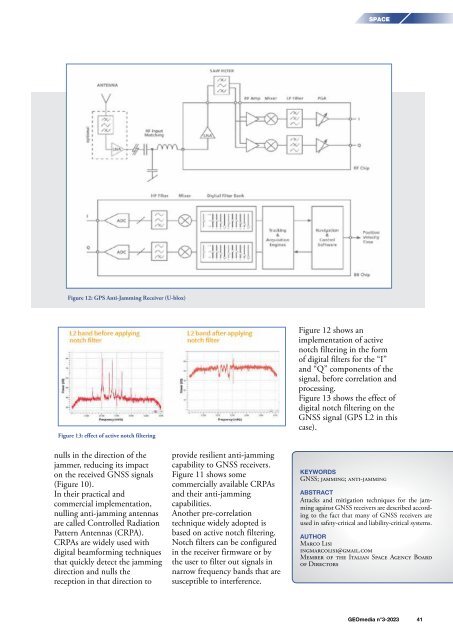GEOmedia_3_2023
EUMAP During the recent pandemic period, the world's attention has shifted towards the healthcare sector, with world leaders striving to avoid the collapse of their national healthcare systems; the economy has entered an artificial coma, while utility systems, including energy, water, telecommunications and waste management systems, have been asked to act immediately in response to these unprecedented conditions, placing extreme pressure on public utility systems.
EUMAP
During the recent pandemic period, the world's attention has shifted towards the healthcare sector, with world leaders striving to avoid the collapse of their national healthcare systems; the economy has entered an artificial coma, while utility systems, including energy, water, telecommunications and waste management systems, have been asked to act immediately in response to these unprecedented conditions, placing extreme pressure on public utility systems.
Create successful ePaper yourself
Turn your PDF publications into a flip-book with our unique Google optimized e-Paper software.
SPACE<br />
Figure 12: GPS Anti-Jamming Receiver (U-blox)<br />
Figure 13: effect of active notch filtering<br />
nulls in the direction of the<br />
jammer, reducing its impact<br />
on the received GNSS signals<br />
(Figure 10).<br />
In their practical and<br />
commercial implementation,<br />
nulling anti-jamming antennas<br />
are called Controlled Radiation<br />
Pattern Antennas (CRPA).<br />
CRPAs are widely used with<br />
digital beamforming techniques<br />
that quickly detect the jamming<br />
direction and nulls the<br />
reception in that direction to<br />
provide resilient anti-jamming<br />
capability to GNSS receivers.<br />
Figure 11 shows some<br />
commercially available CRPAs<br />
and their anti-jamming<br />
capabilities.<br />
Another pre-correlation<br />
technique widely adopted is<br />
based on active notch filtering.<br />
Notch filters can be configured<br />
in the receiver firmware or by<br />
the user to filter out signals in<br />
narrow frequency bands that are<br />
susceptible to interference.<br />
Figure 12 shows an<br />
implementation of active<br />
notch filtering in the form<br />
of digital filters for the “I”<br />
and “Q” components of the<br />
signal, before correlation and<br />
processing.<br />
Figure 13 shows the effect of<br />
digital notch filtering on the<br />
GNSS signal (GPS L2 in this<br />
case).<br />
KEYWORDS<br />
GNSS; jamming; anti-jamming<br />
ABSTRACT<br />
Attacks and mitigation techniques for the jamming<br />
against GNSS receivers are described according<br />
to the fact that many of GNSS receivers are<br />
used in safety-critical and liability-critical systems.<br />
AUTHOR<br />
Marco Lisi<br />
ingmarcolisi@gmail.com<br />
Member of the Italian Space Agency Board<br />
of Directors<br />
<strong>GEOmedia</strong> n°3-<strong>2023</strong> 41

















